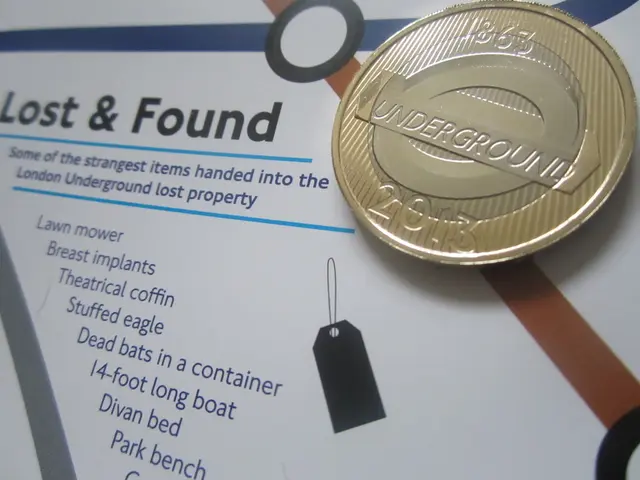Major financial institutions including DB, Santander, and StanChart are offering advice to Circle on the establishment of a new stablecoin payments network.
Circle, a leading stablecoin issuer, has announced the launch of its Circle Payments Network (CPN), a groundbreaking solution designed to streamline cross-border payments using stablecoins. The network aims to provide a vertically integrated solution, offering on- and off-ramps, foreign exchange (FX), and currency liquidity, in addition to stablecoin payment instruments.
The CPN is a non-custodial, off-chain orchestration platform that leverages stablecoins—primarily USDC and EURC—settled on multiple public blockchains like Ethereum, Solana, Avalanche, Polygon, and Base. By bypassing traditional, slow, and costly correspondent banking and SWIFT systems, the network enables 24/7/365 settlement with near-instant finality and regulatory compliance.
CPN aggregates payment instructions from licensed financial institutions, acting as a unified network through which partners like WorldRemit, dLocal, Yellow Card, and others send cross-border remittances, payroll, and trade finance payments. The network's core innovation lies in its ability to offer predictable settlement times and compliance across multiple corridors without custom integrations or prepositioning of liquidity.
As of mid-2025, CPN supports four initial corridors (Hong Kong, Brazil, Mexico, Nigeria) with plans to rapidly expand and onboard 100+ financial institutions, emphasising both developed and emerging markets. Compared to previous fragmented blockchain payment solutions, CPN allows institutions to connect once and access the benefits without the need for custom integrations or the prepositioning of liquidity.
Circle has also launched Arc, a Layer-1 blockchain tailored for financial institutions, functioning as the settlement backbone with native USDC gas fees, configurable privacy, deterministic settlement finality, and EVM compatibility. This helps institutions scale and comply with regulations like the 2025 GENIUS Act, which mandates full cash reserves backing for stablecoins, enhancing USDC’s institutional confidence.
In terms of competition, while Ubyx—a similar stablecoin-powered cross-border payment platform—is also eyeing the same space, details about Ubyx and how it compares to Circle’s CPN are not readily available. However, Circle’s approach stands out given its strong regulatory positioning, broad institutional partnerships, and technical integration across multiple blockchain protocols to offer liquidity and scalability. Circle has also recently launched Circle Gateway, enabling cross-chain USDC liquidity within 500 milliseconds, further boosting CPN’s efficiency and usability.
The business model of the Circle Payments Network involves three sets of fees: payout fees for financial institutions in the recipient country, FX spreads, and a network fee that is a variable basis-point charge, tiered by country group. If Ubyx becomes successful, it could potentially level the playing field, enabling smaller stablecoins to compete more effectively.
In the recipient country, financial institutions would respond, and the originator would confirm the best quote, allowing the stablecoin transaction to proceed. It remains uncertain whether Ubyx will be able to head off the likelihood of an oligopoly of stablecoins.
The initial phase of the Circle Payments Network will involve APIs, with a future evolution into a smart contract protocol. Circle is collaborating with banks such as Deutsche Bank, Santander, Societe Generale, and Standard Chartered, as well as 28 payment firms, to design the network. Fireblocks, a firm with 2,000 institutions connected to its network, many of them crypto firms, will be integrated into the Circle Payments Network.
The Circle Payments Network aims to empower consumer, business, and institutional payments, transitioning to a fully on-chain architecture for FX routing, aggregation, and settlement in the future. Circle has filed for an IPO at the start of this month, although the timing remains uncertain due to stock market volatility following recent sanctions announcements.
In summary, Circle’s Circle Payments Network leverages regulatory clarity, a broad ecosystem of partners, multiple blockchain networks, and institutional-grade infrastructure to offer a predictable, efficient alternative to legacy and competing stablecoin initiatives. Ubyx's details and comparative strengths are not currently available in the search results.
| Feature | Circle Payments Network (CPN) | Ubyx (based on available info) | |--------------------------------|-------------------------------------------------|---------------------------------------------| | Core Tech | Non-custodial orchestration, multiple blockchains (Ethereum, Solana, Avalanche, Polygon, Base) | Unknown/not clearly documented | | Stablecoins | USDC, EURC (regulated, cash-backed) | Unclear | | Settlement Speed & Availability| 24/7/365 settlements, near-instant finality, cross-chain liquidity (via Circle Gateway) | Unknown | | Institutional Integration | 20+ active partners, 100+ onboarding pipeline, regulatory compliance under GENIUS Act | Unknown | | Supported Corridors | Initially 4 (Hong Kong, Brazil, Mexico, Nigeria), expanding rapidly | Unknown | | Unique Features | Arc Layer-1 blockchain, EVM-compatible, privacy controls, regulatory clarity | Unknown |
Read also:
- Ford's Revisited Capri: A Contentious Revival for a Legendary Brand Name
- Rivian is developing a steering system without direct mechanical connection, along with rear wheel guidance (latest update)
- Driving 90 miles on I-35 in my fresh Tesla Model Y equipped with FSD, I witnessed the self-driving technology's striking impressiveness, prompting my cousin to contemplate purchasing one for his elderly father.
- Exporo to Boost Investment in Socially Responsible Projects






